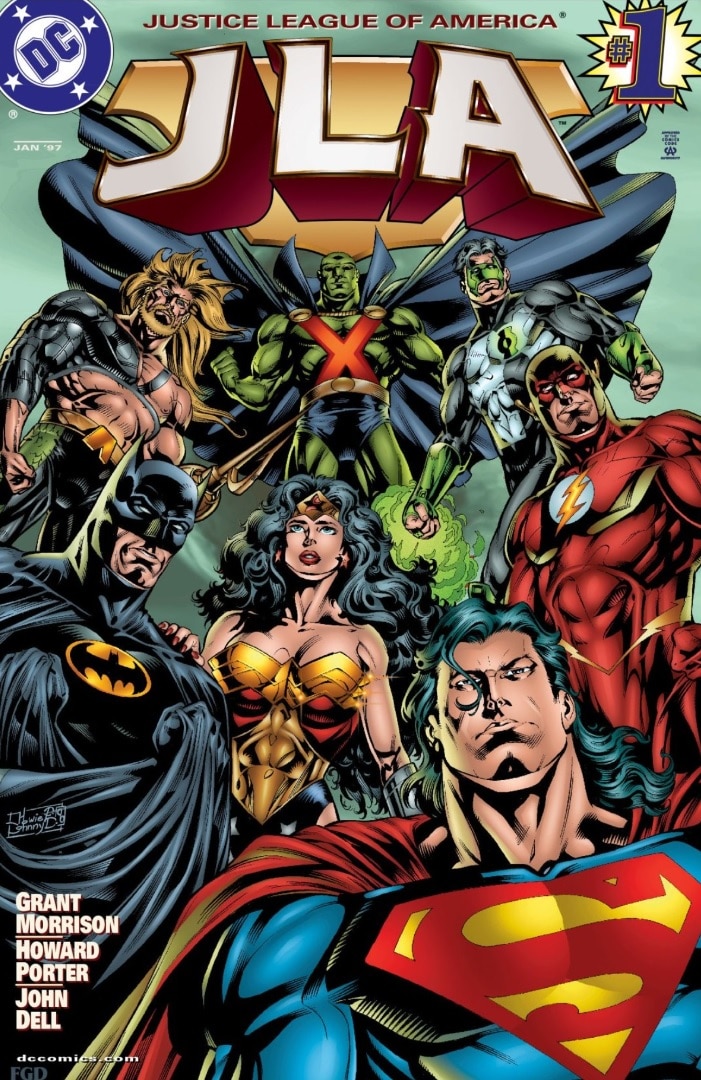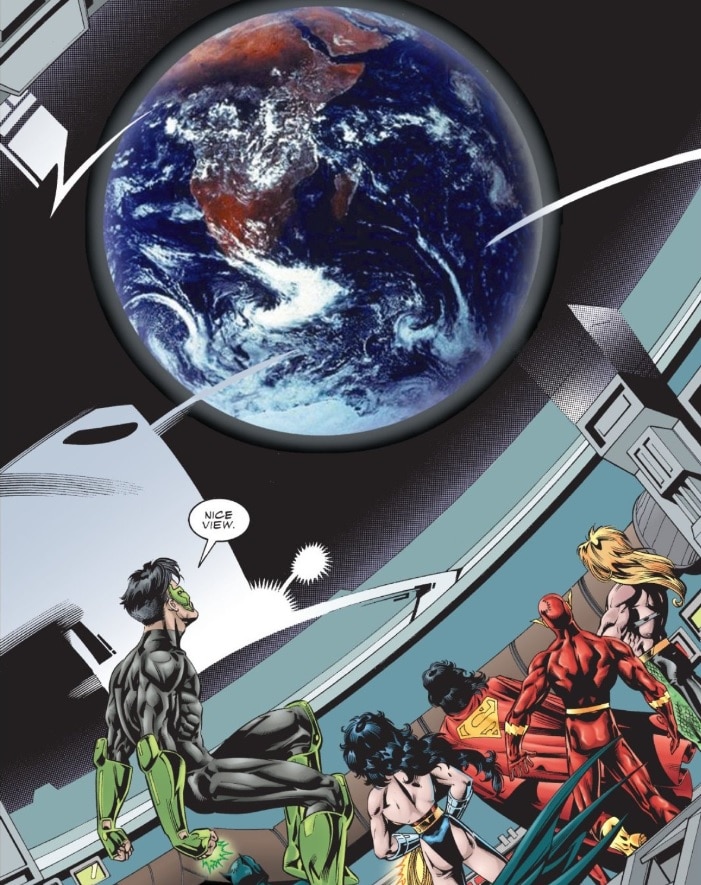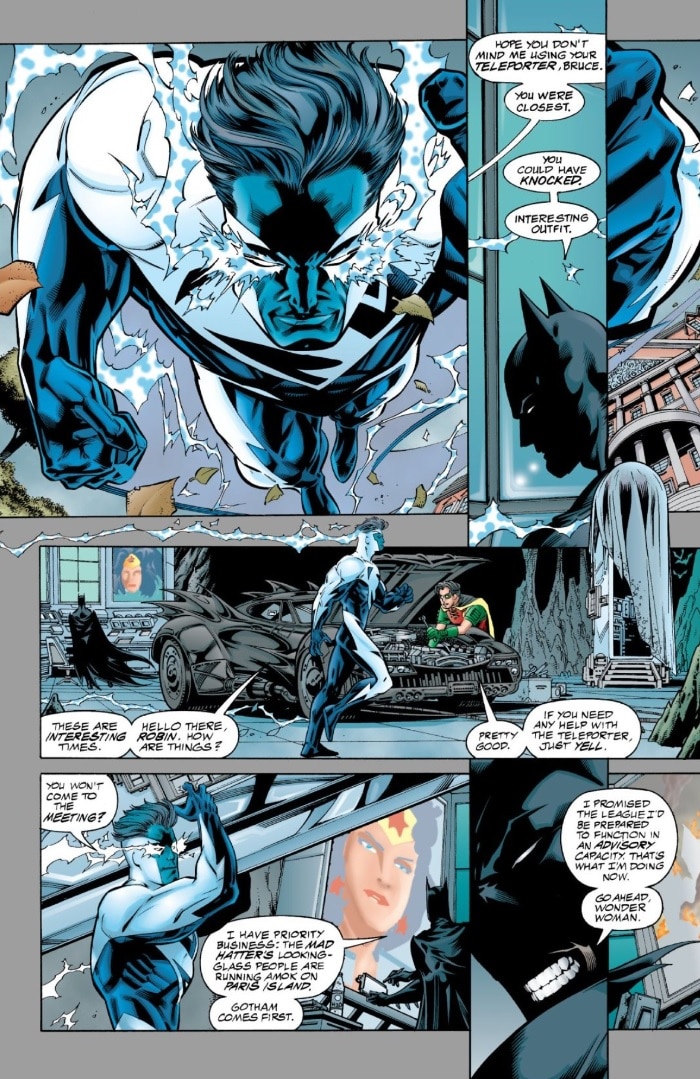The '90s were a wild time for comics. The industry went from niche market to worldwide business leader. DC and Marvel became household names and a group of young superstar artists broke away from the big two system to found Image Comics. A historical auction changed how the world saw the once disposable collectability of comic books and the speculation boom made sales soar with millions of issues flying off shelves each week.
But booms often lead to crashes and that's exactly what happened after the comics business bubble burst. The crash hit the industry in 1996, causing chaos and leaving many fans with boxes full of first issues that they thought they could build a nest egg with. As the comics world tried to look back at what went wrong, one writer was looking to the future and reshaping superhero comics forever. Grant Morrison, Howard Porter and John Dell were crafting a run that would quickly become DC's biggest seller. The juxtaposition of a deep understanding of what makes superhero comics work with an unprecedented level of risk-taking makes for a series that still feels exciting and bombastic over two decades later.

Though it's DC's flagship team and historically features the trinity of the company's most famous heroes, the '90s were rough on the members of the Justice League. Flagging sales for their spinoff series meant that something had to change. Slowly, a plan came together. A summer miniseries reintroduced readers to the Justice League of America, but it wasn't until November 1996 that Morrison, Porter and Dell reimagined the team under the title JLA. Like much of Morrison's best work, the series at first appears to be a back-to-basics take on superheroes. The team was a solid and simple one: Superman, Wonder Woman, Batman, Flash, Green Lantern, Aquaman and Martian Manhunter. But really, he was building something much, much bigger.
The allegorical theological nature of superheroes has always bubbled under the surface. From Superman's obvious biblical influences to the fact that the omnipotent beings often act as the ultimate patriarchal and matriarchal figures, the idea of superheroes as gods is not a new one. But in JLA, Morrison puts it front and center. Here are the heroes that you grew up with definitively presented as all-powerful beings who are humanity's last line of defense. Heroes who can take down anything that comes at them from alien invaders to super-powered government goons. This vision of the JLA is so omnipotent that they can no longer reside on Earth and instead look down from the skies at the humans below from their moon base.

It's easy to imagine that a book which focuses so heavily on the idea of superheroes-as-gods could be dry or overly serious, but every page of JLA is bursting with hyper-muscled action. Superman is still rocking his mullet, Aquaman sports a bushy beard and a harpoon hand, and Batman has a sardonic sense of humor. Porter’s pencils and Dell’s inks bring a '90s extremity to every Big Hero moment. Just like Morrison's recent work on The Green Lantern, JLA is a distillation of what Morrison loves about superhero comics mixed with his own tendency for the strange.
In this world, the first antagonists that the superheroes are forced to face down are basically reflections of themselves. The Hyperclan are aliens who claim to be the saviors humanity needs. And just like they did when superheroes revealed themselves, the population of the world follows the Hyperclan's every move, even when they revert to extreme violence. Holding a mirror up to the idea of superheroes and their apparent policing of the world is a theme that runs through Morrison's best work and he really honed it during this 30+ issue run.

Though the series began as a back-to-basics take on the team, as the JLA grew Morrison inserted plenty of moments that belie those straightforward origins. The writer takes joy in introducing new legacy heroes like Kyle Rayner, Steel and Connor Hawke. Melding the old and the new is another tenet of Morrison's work that he built on here, crafting a sprawling team which changed and adapted as the rest of the DC Universe needed it too. One of the most-discussed moments of the series is the appearance of Blue Superman, who only ended up in JLA due to his editorial needs outside of the book, but the team manages to make it feel like a natural highlight.
If '90s comics have never really been your thing and the extreme nature of it all has always seemed a little more style than substance, then this is the series you need to read. Not only did it herald the modern age of meta-superhero stories, but it's also a grandiose, action-packed adventure that features more mullets, aliens, bad guys and heroes than you can shake a stick at.
Grant Morrison's first two storylines on JLA with artists Howard Porter and John Dell were recently published in a new DC Essential Edition. You can also read the full run in print or digitally.
Rosie Knight writes about comics, movies and TV for DCComics.com, Nerdist, IGN and The Hollywood Reporter. For another look at one of DC's groundbreaking storylines, check out her article on the still-shocking Aquaman: Death of a Prince. Follow Rosie on Twitter at @RosieMarx.




















